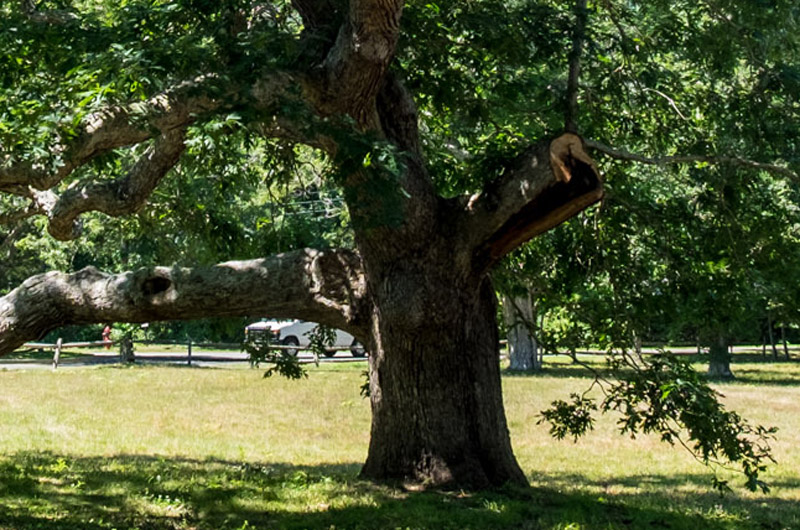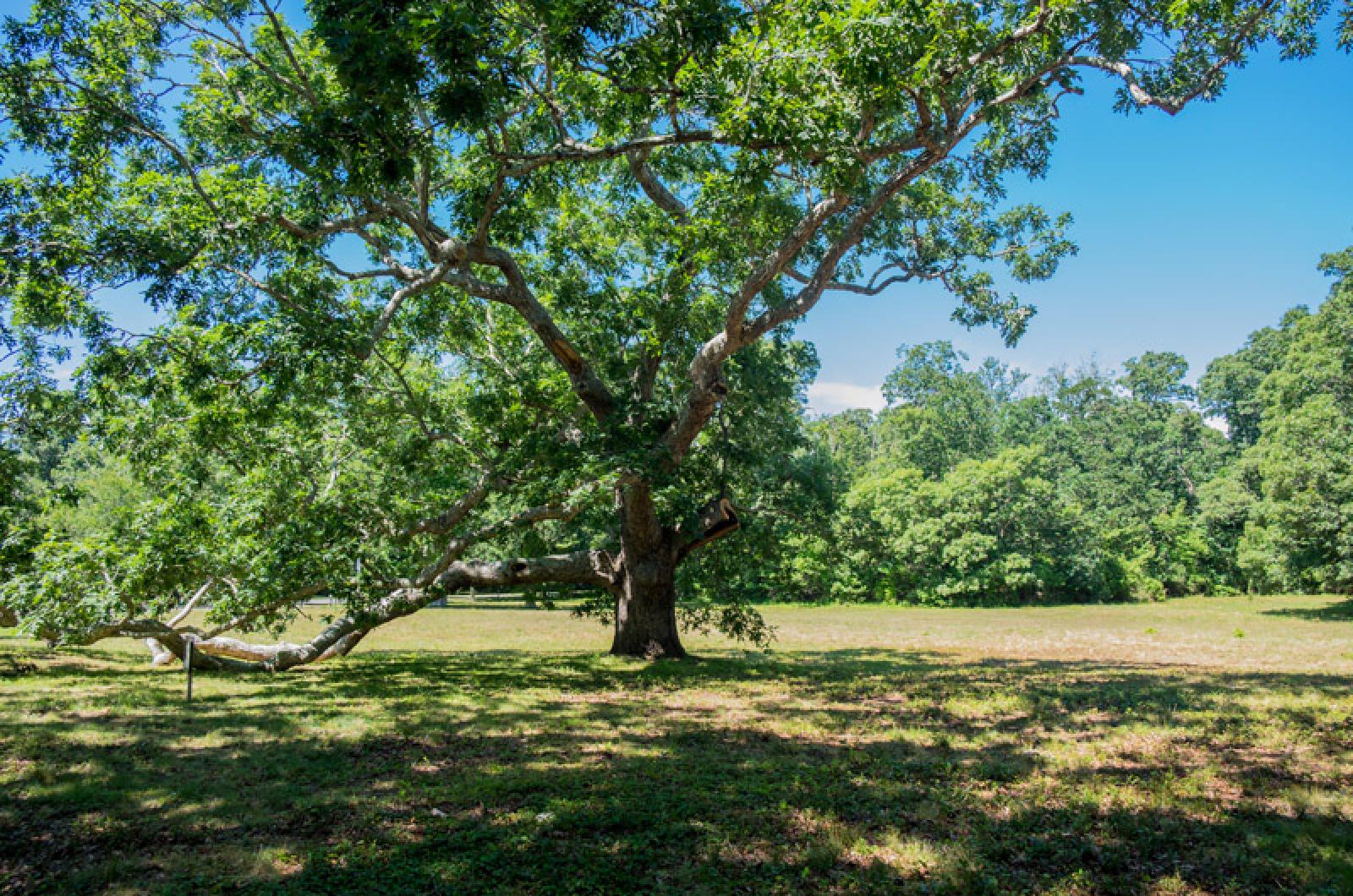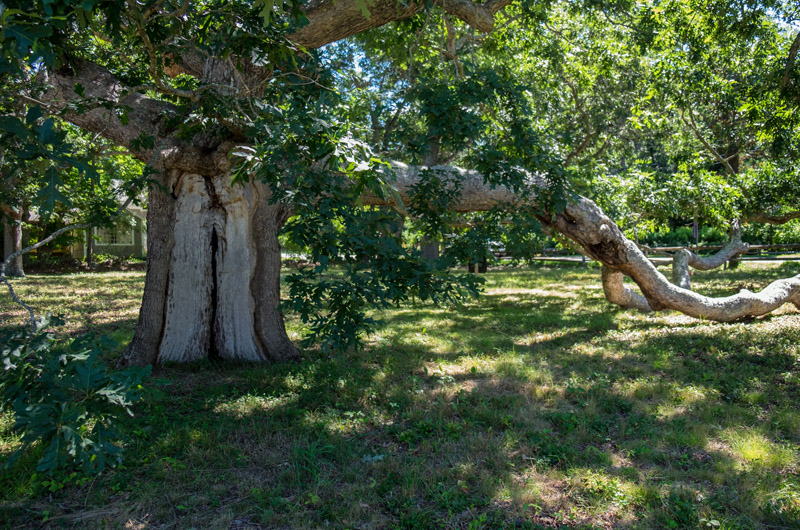In the early 1950s, Bernice Kirby and her best friend Judy Anderson were playing tree tag. Ms. Anderson was “it.” The site of their game: the big white oak tree at the intersecton of State Road and North Road, across the street from the old Humphreys Bakery in West Tisbury.
Ms. Kirby scurried up one of the thick curving limbs of the tree, a limb that today rests its weight on the ground. She slipped, fell and sprained her arm. Sixty-five years later, the two childhood friends stay in touch, and they still laugh about the fateful fall.
A member of the original Humphreys family, Ms. Kirby lived in the house across the street from the historic white oak from when she was in seventh grade to when she went away to college. When the photographer Alfred Eisenstaedt came to shoot the tree in 1969, Ms. Kirby was there watching him set up his tripod, though she didn’t quite know what was happening.
“I was sitting on my porch across the street,” she said. “And he was just this strange man with a big camera.”
The famous Life Magazine photographer was a longtime summer resident of the Island, where he took many pictures, including of the white oak.
According to Tim Boland, executive director of the Polly Hill Arboretum, the tree is the king of the white oaks, Quercus alba, and one of six species of oaks found on the Vineyard. In the 17th and 18th centuries, white oaks were the primary resource for building ships, houses, furniture and bridges. The Wampanoags used to calculate the correct time to plant corn based on the measurements of an emerging oak leaf.
White oaks cover about 70 per cent of the Island, making them the single most dominant genus of trees here today.
On a recent morning, Mr. Boland stepped over the fence at the head of North Road and crossed the small field to the white oak. He pointed out white oak seedlings nestled in the grass surrounding the stately tree, the result of squirrels’ contributions.
“It’s a very interesting kind of tree in an open field,” he said. “The tree would be considered a wolf tree, meaning it’s a lone wolf in a field that the farmers would have worked around and made a conscious decision to preserve.”
He said white oaks have persisted because they are resilient and have adapted to the Vineyard’s sandy, rocky soil and salty winds. Deer, squirrels, turkeys and other wildlife eat the acorns from white oaks.
“They support more fauna than any other tree species worldwide,” said Mr. Boland.
Mr. Boland has studied the six different species of oak that occur on the Island — the other five are black, scrub, post, dwarf chinkapin and scarlet — but a love affair with the white oak has lasted for more than 20 years. The white oak is distinguished by its light green leaves with five to seven rounded lobes, and light gray bark. It can survive over 400 years. Mr. Boland hopes that the historic white oak will live for at least another 100 years.

The tree’s health is mostly thanks to Mark DiBiase and Bartlett Tree Experts, who have been taking care of the tree for Seven Gates Farm, which owns the land where it grows. The tree team uses a technique called restorative air spading, in which they put a compressor underground and blow out the soil that surrounds the roots. They then replace the old soil with nutrients and more aerobic soil.
Last year, Mr. DiBiase and his crew removed a rotting branch that was on the back side of the tree and about 10 feet up from the ground. Though the branch was a significant loss, Mr. Boland said the tree is healthier than ever.
“Overall it’s a massive wound and you don’t like to see it,” he said. “But trees have the ability to heal themselves. That rot should heal over time.”
He pointed to a much larger branch that split off four or five years ago as an example. The sides of the gap were already starting to grow in.
The white oak has changed since Ms. Kirby was a young girl. Climbing on the tree is now forbidden, and she no longer watches the sunset atop its leaves from across the street every night. But her devotion to the white oak is unchanged.
“It is just a beautiful old tree,” she said.









Comments
Comment policy »